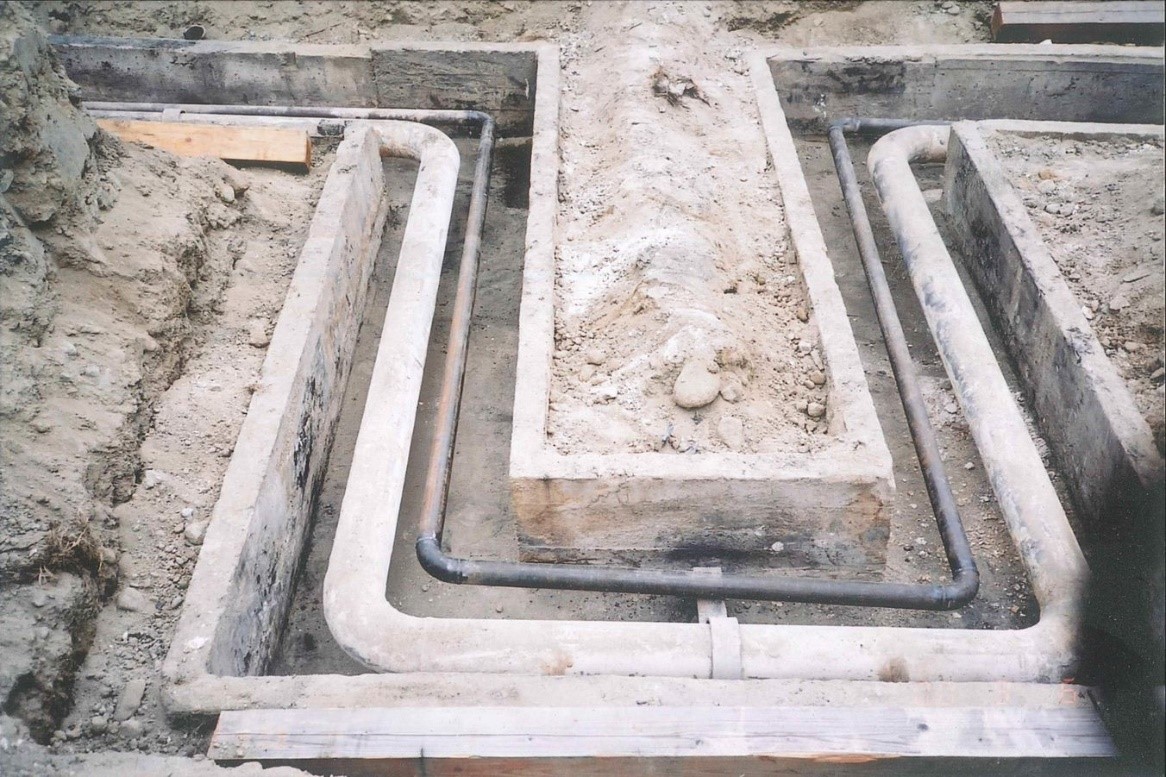
Are the rumors of tunnels at the old Riverview Hospital site true?
Riverview Hospital was closed in 2012 after more than 100 years of mental health treatment. (The site has since been re-named səmiq̓ʷəʔelə to acknowledge kʷikʷəƛ̓əm First Nation; it is part of their core and traditional territory). Rumors often surface about a complex labyrinth of tunnels that were used to connect the old buildings. In some ways, this is true. Numerous buildings were constructed across this 244-acre site and are still in place today. They were all connected by multiple kilometers of steam lines that supplied radiant heating to about 4,700 patients and 2,200 staff when the site’s population was the highest (in 1956, then called Essondale).
The steam pipes and returning condensates pipes were laid side by side. They had to be encased with a large concrete box conduit to protect them from erosion, the weight of soil and surface level traffic. These utility lines are large enough to accommodate these pipes and must be unearthed to accommodate major maintenance projects – these are what some people may refer incorrectly to as the “tunnels” of Riverview. Service pits are found at junction points and enable annual maintenance and monitoring to occur – when steam lines are not operational over the warm months, BC Housing’s trained boiler house staff undertake preventative maintenance.

Image: steam lines and returning condensates pipes.
Many of the steam lines at səmiq̓ʷəʔelə are still in operation despite their aging condition. They are the main heating source for most of the active buildings on the south half of the site. Some of the lines were disconnected to several buildings before BC Housing took ownership of the property. Lack of heating greatly contributed to the decay seen in some of the buildings today.

Image: A large boiler plant, still in operation today, generates the steam that travels between buildings through “tunnels”. Coal was historically used to power this facility. Today, it primarily uses natural gas.
Other steam lines have been replaced. Recent emergency repair work was needed to replace a network of corroded pipes that ran from Cottage 113 and serviced several nearby buildings. Escaping steam was rising-up the side of the Roadside building, risking exterior damage.


Images: 1. Old, corroded steam line pipe; 2. Service pit showing a segment of replaced line.
Managing the ongoing work of repairing and replacing aging infrastructure like the steam lines is one of this site’s main challenges. As area managers, BC Housing is committed to this ongoing maintenance work in order to care for the buildings on-site, both tenanted and untenanted.
